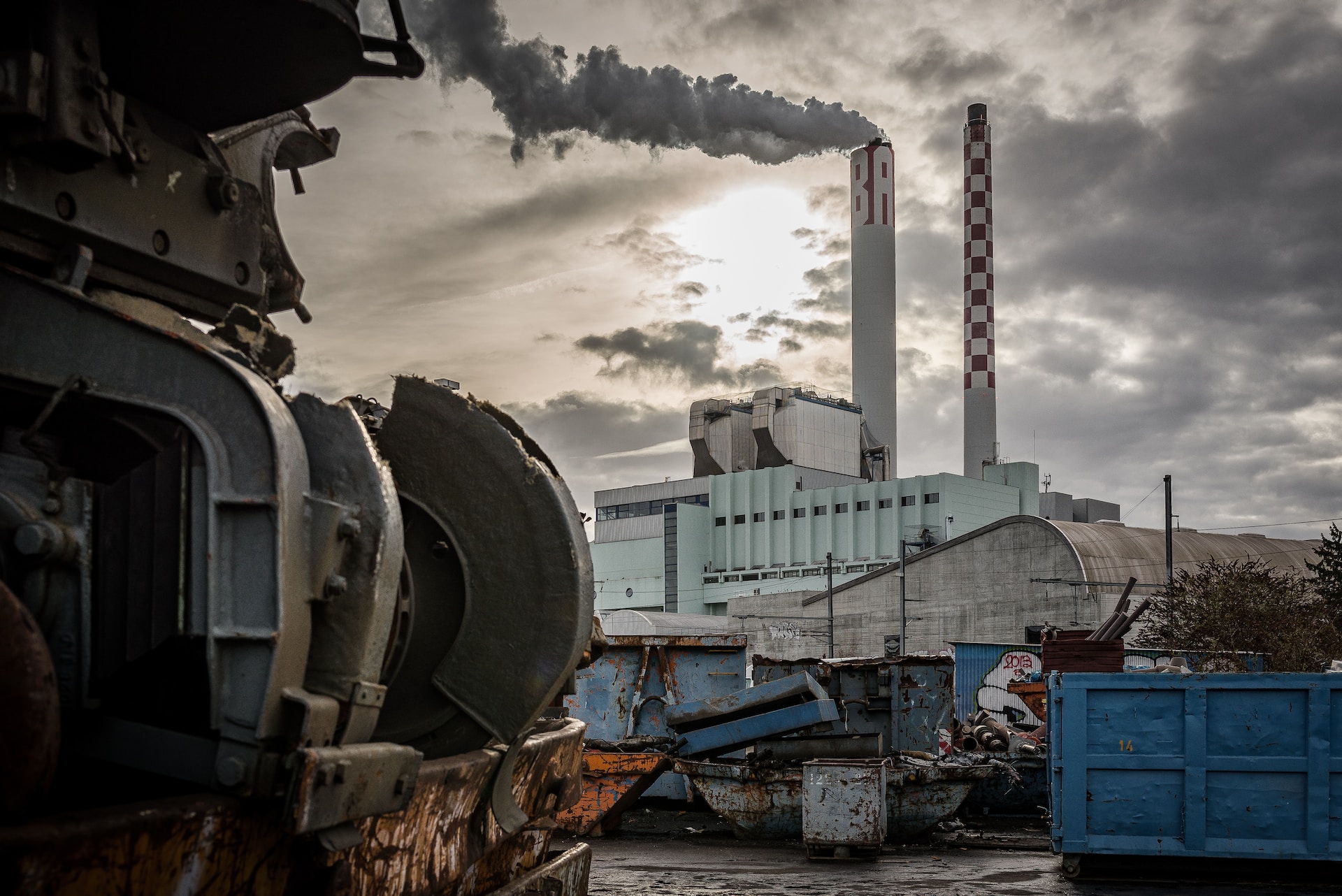
Hazardous Waste Incineration: A Closer Look at Environmental Solutions
We are reader-supported. When you buy through links on our site, we may earn affiliate commission.
Hazardous waste incineration is critical in managing and disposing of toxic materials that pose significant threats to public health and the environment. While it has long been a subject of debate due to its potential environmental impacts, technological advancements and stringent regulations have made hazardous waste incineration a safer and more effective method for dealing with harmful substances.
Understanding Hazardous Waste Incineration
Hazardous waste refers to materials that contain properties or substances that make them potentially harmful to human health and the environment. These materials can be in various forms, including liquids, solids or gases, and often result from industrial, chemical, pharmaceutical or medical processes. Some common examples of hazardous waste include chemicals, pesticides, radioactive materials and certain medical byproducts.
People have used incineration as a form of energy generation since 1876 in the United Kingdom. Incineration is a specialized and controlled process designed to dispose of materials that threaten humans and the environment safely. This method involves subjecting the waste to extremely high temperatures within carefully engineered incineration facilities. Most hazardous waste incinerators operate between 1800°F and 2200°F. During combustion, a chemical reaction neutralizes toxic properties, transforming the waste into less harmful substances.
The Need for Hazardous Waste Incineration
Incineration is one of the most widely used toxic waste disposal methods for several reasons:
- Complete destruction: Incineration can effectively destroy hazardous waste materials, reducing their toxicity and eliminating the potential harm they pose to humans and ecosystems.
- Volume reduction: The incineration process can significantly reduce the volume of waste, making it more manageable for long-term storage or disposal.
- Energy recovery: Many modern incineration facilities recover energy through heat or electricity, making the process more sustainable and cost-effective.
- Regulatory compliance: Stringent regulations and guidelines govern hazardous waste disposal, and incineration facilities adhere to strict standards to protect human health and the environment.
The Hazardous Waste Incineration Process
This process involves several key steps:
- Waste collection: Specialized containers and vehicles transport hazardous waste to designated incineration facilities.
- Pre-treatment: Before incineration, waste may undergo pre-treatment to remove contaminants, reduce moisture content or prepare it for efficient combustion.
- Incineration: The waste is burned in a controlled environment at high temperatures, ensuring complete combustion and minimizing emissions.
- Air pollution control: Modern incineration facilities have state-of-the-art pollution control systems to capture and neutralize harmful emissions. These systems may include scrubbers, filters and catalysts.
- Energy recovery: You can harness heat generated during incineration to produce steam and use it as electricity generation or heating.
- Residue management: Regulations ensure careful management and disposal of remaining ash and non-combustible materials.
The Advantages of Incineration
Waste incineration offers several potential advantages, making it a viable waste management solution when handled responsibly.
- Effective waste reduction: Incineration can significantly reduce the volume by up to 90%, depending on the type of waste processed. This volume reduction makes it easier to handle and manage the remaining residues.
- Complete destruction of hazardous materials: Incineration is highly effective in destroying dangerous materials, including chemicals and pathogens. It ensures these materials don’t pose any long-term environmental or health risks.
- Energy recovery: Many modern waste incineration facilities recover energy during combustion. This energy is converted into electricity, steam or heat, reducing the reliance on fossil fuels and contributing to energy sustainability.
- Safe disposal: Hazardous waste incineration handles and destroys toxic and dangerous materials you can’t safely manage through conventional disposal methods.
- Prevention of long-term environmental damage: By eliminating hazardous waste, incineration helps prevent the long-term release of toxic substances into the environment, which could occur during improper storage or landfilling.
- Reduced risk of accidents: Incinerating hazardous waste reduces the risk of accidents during transportation and storage, as it can be processed at or near the point of generation.
- Reduction in landfill dependence: By diverting waste from landfills, incineration helps alleviate the pressure on limited landfill space and can reduce space by up to 95%. This advantage is particularly important in densely populated areas where land is scarce.
- Compliance with strict policies: These facilities must adhere to even more stringent environmental regulations and safety standards than those for non-hazardous waste incineration, ensuring the highest level of protection.
Environmental Concerns
While hazardous waste incineration has clear benefits, it’s not without its environmental concerns. Critics point to potential issues such as air pollution, the release of dioxins and furans and the impact of ash disposal. To address these concerns, modern incineration facilities implement several mitigation measures:
- Emission control: Rigorous emission control systems capture and treat pollutants before they are released into the atmosphere, reducing the environmental impact.
- Monitoring and reporting: Facilities must continuously monitor emissions and report data to regulatory agencies, ensuring compliance with air quality standards.
- Technology upgrades: Ongoing technological advancements lead to improved combustion efficiency and lower emissions, minimizing environmental impact.
- Ash management: Proper disposal and management of ash are critical to prevent leaching of contaminants into the environment. Ash may be stabilized and safely stored in engineered landfills.
A Global Perspective
From a global perspective, hazardous waste incineration practices vary significantly among countries, reflecting disparities in regulations, technological capabilities and environmental priorities. Some nations, especially those with advanced industrial sectors, have well-established hazardous waste incineration programs that adhere to strict environmental standards. They prioritize safely disposing and destroying toxic materials to protect their citizens and ecosystems. In contrast, developing countries may need help implementing robust incineration infrastructure, leading to issues related to improper waste management, open burning and potential environmental contamination.
International agreements, such as the Basel Convention, are vital in regulating the transboundary movement of hazardous waste and promoting responsible waste disposal practices. As environmental awareness and global cooperation continue to grow, there’s an increasing emphasis on adopting sustainable incineration technologies, sharing best practices and addressing environmental justice concerns related to the location of these facilities. These concerns ensure a more uniform and responsible approach to hazardous waste incineration worldwide.
Looking to the Future
Hazardous waste incineration is vital in managing toxic chemicals, safeguarding human health and protecting the environment. While it’s not without its challenges, technological advances and stringent regulations have made it a safer and more sustainable option. As we continue to prioritize the responsible disposal of hazardous waste, ongoing research and innovation will further enhance the environmental performance of incineration facilities, making them a crucial part of our waste management infrastructure.
Share on
Like what you read? Join other Environment.co readers!
Get the latest updates on our planet by subscribing to the Environment.co newsletter!
About the author
Jane Marsh
Starting from an early age, Jane Marsh loved all animals and became a budding environmentalist. Now, Jane works as the Editor-in-Chief of Environment.co where she covers topics related to climate policy, renewable energy, the food industry, and more.





